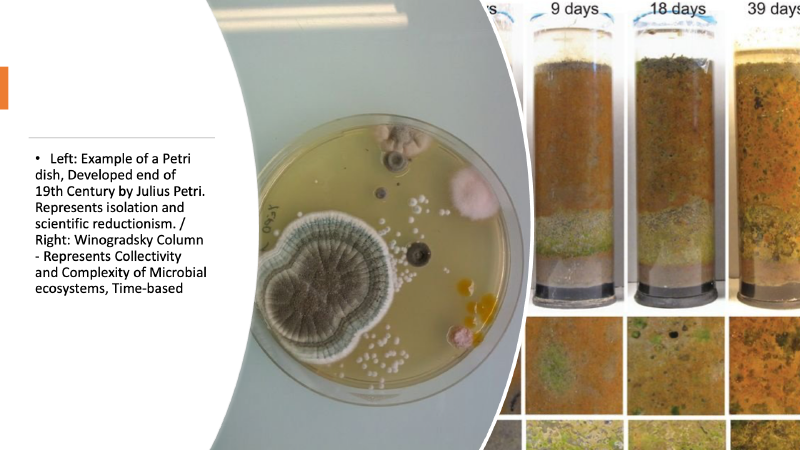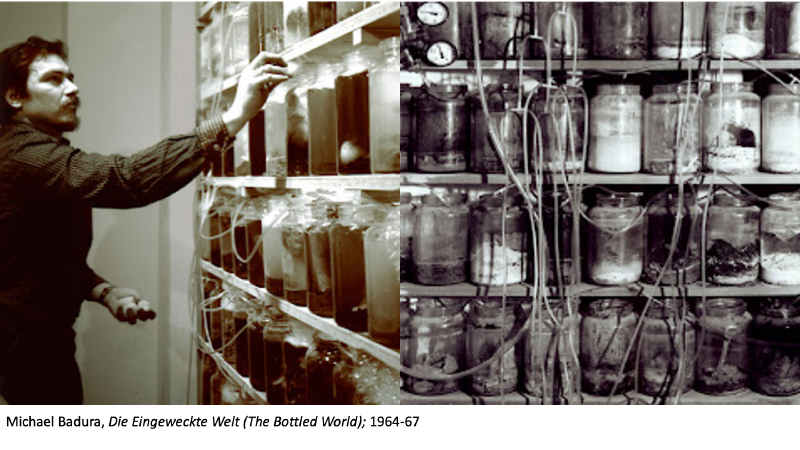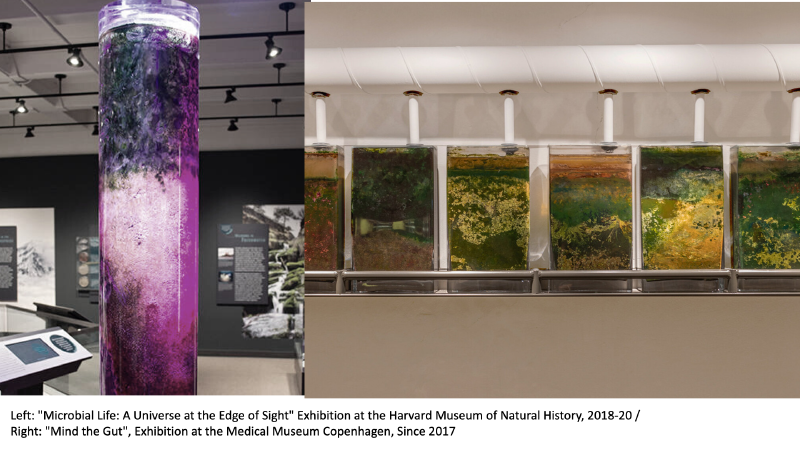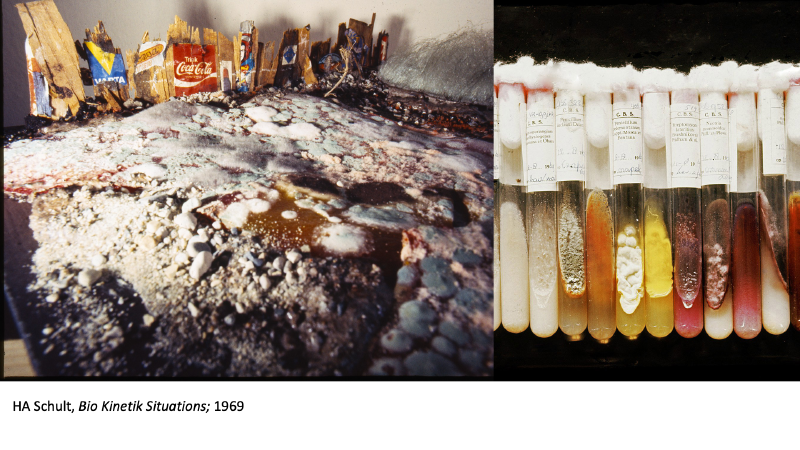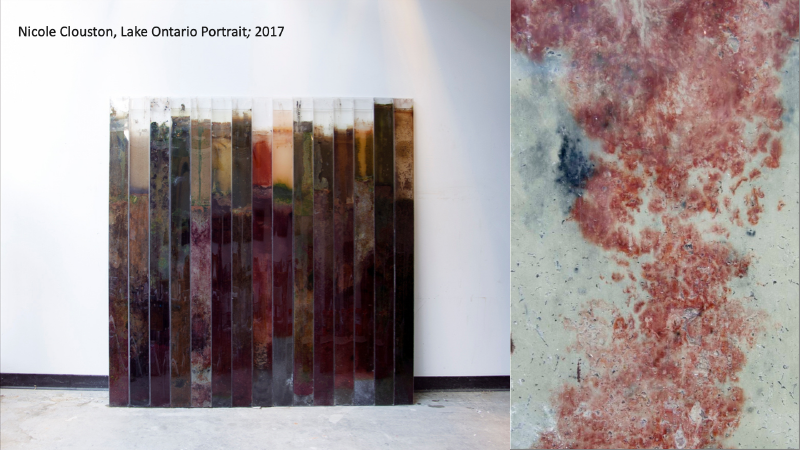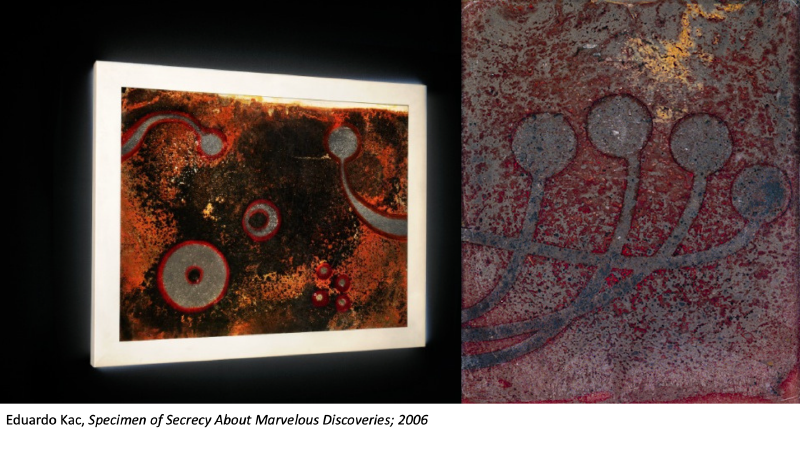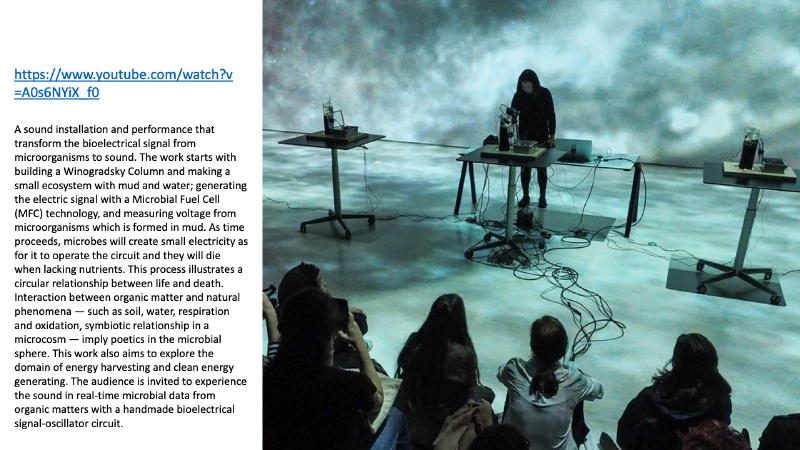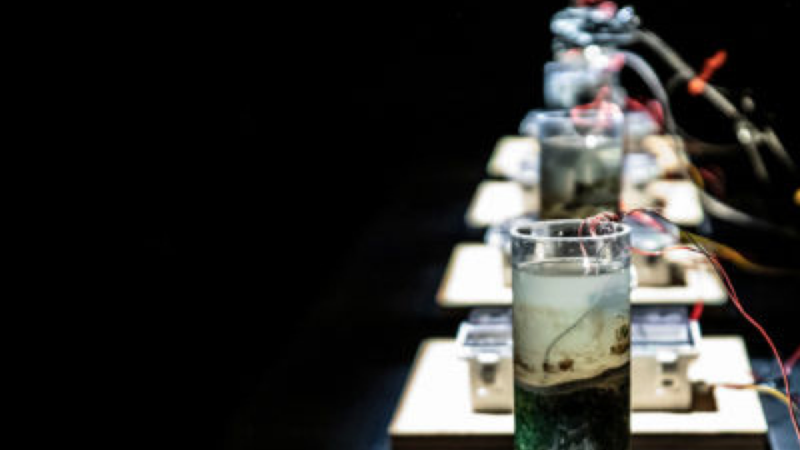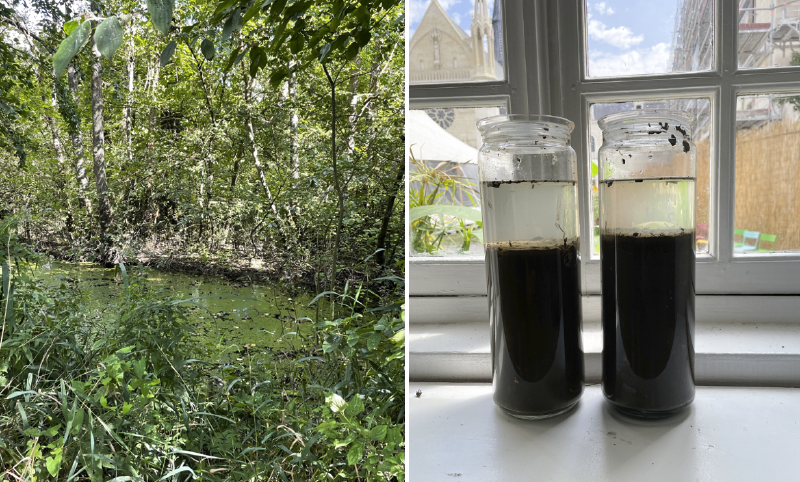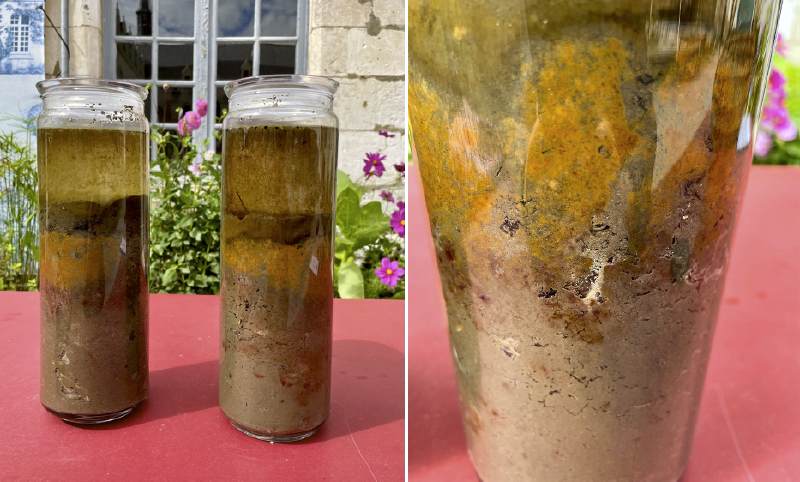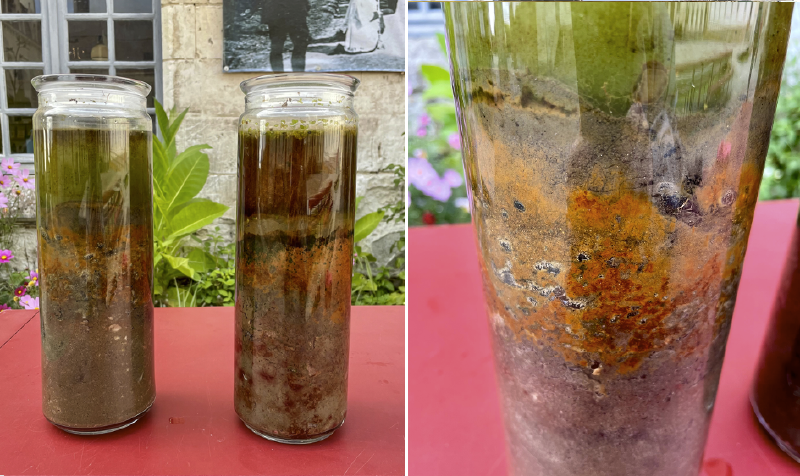| (One intermediate revision by the same user not shown) | |||
| Line 33: | Line 33: | ||
==EXPERIMENTS== | ==EXPERIMENTS== | ||
2 spaghetti jars are filled with mud collected from a swamp area in Montreuil-sur-Mer. The samples were collected from 2 different spots and placed in different columns. Some newspapers ( for carbon and cellulose), egg shells (calcium carbonate), and egg yolk (sulfur) were added in layers. I also add some powder chalkstone to experiment with the effect. Chalk (or gypsum) is a source of calcium sulfate and also a local stone found in this area. | 2 spaghetti jars are filled with mud collected from a swamp area in Montreuil-sur-Mer. The samples were collected from 2 different spots and placed in different columns. Some newspapers ( for carbon and cellulose), egg shells (calcium carbonate), and egg yolk (sulfur) were added in layers. I also add some powder chalkstone to experiment with the effect. Chalk (or gypsum) is a source of calcium sulfate and also a local stone found in this area. The columns were placed in a sunny place and observed for 12 weeks. | ||
[[File:Screenshot 2022-11-19 at 14.22.42.png|800px]] | [[File:Screenshot 2022-11-19 at 14.22.42.png|800px]] | ||
AFTER 6 WEEKS | |||
[[File:Screenshot 2022-11-19 at 20.58.20.png|800px]] | [[File:Screenshot 2022-11-19 at 20.58.20.png|800px]] | ||
[[File:Screenshot 2022-11-19 at 20.58.39.png| | AFTER 12 WEEKS | ||
[[File:Screenshot 2022-11-19 at 20.58.39.png|800px]] | |||
Latest revision as of 18:04, 19 November 2022
I would like to focus on capturing microbial elements found in the local landscape of Weimar. I am also intended in designing a micro/macro landscape in virtual/mixed reality. My first idea for the course is to seize, grasp, shape, model and render regional microbial life of local area. I would like to culture mixed microbial habitats and observe their distribution and development in transparent containers. A VR experience that captures the micro/macro habitat of the area will be the second part of the work.
RESEARCH I
I would start by collecting samples from land, water and mud and investigate the microbial population such as bacteria, nematodes, fungi, algae. Then, I would observe the microorganisms to a point where they become visible to humans without the aid of a microscope. The scientific way of capturing microorganisms includes isolating them in petri dishes then using a variety of microscopy techniques. Alternative to petri dishes, I would like to use Winogradsky Column style tubes or spherical containers to create a small ecosystem.
Capturing, framing a living presence, activity, growth, metabolism, reproduction would be the first section of my work. I would also like to propose a hybrid approach by designing a landscape in virtual space. The idea of VR relates the invisibility of the microscopic to the incomprehensibility of the virtual. In the VR, the microscopy images can be used for the creation of the terrain. 3D scanning of the macro environment surrounded by the landscape can be used as point cloud. Laser scanning, photogrammetry techniques can be used to capture the macro habitat such as plants, trees, monuments, or small hills. It is important to recognize that all the plant activity is very much based on the microorganisms, they are keeping the planet going. The project captures microbial life into containers and virtual reality provides new visualizations of experiences by expanding the vision and frame
WINOGRADSKY COLUMNS
Compered to isolated and clean, pure cultures on petri dishes, Winogradsky's columns are dirty and mixed. They are more inspired by the natural environment and ecology which make sense of the microbial world. The process is also time based. Microbial colonies living in the sample continue to grow and change over time.This device was developed in order to culture mixed bacterial ecosystems and observe their distribution and development within a "habitat".
ARTWORK EXAMPLES THAT USE WINOGRADSKY COLUMNS
EXPERIMENTS
2 spaghetti jars are filled with mud collected from a swamp area in Montreuil-sur-Mer. The samples were collected from 2 different spots and placed in different columns. Some newspapers ( for carbon and cellulose), egg shells (calcium carbonate), and egg yolk (sulfur) were added in layers. I also add some powder chalkstone to experiment with the effect. Chalk (or gypsum) is a source of calcium sulfate and also a local stone found in this area. The columns were placed in a sunny place and observed for 12 weeks.
AFTER 6 WEEKS
AFTER 12 WEEKS
